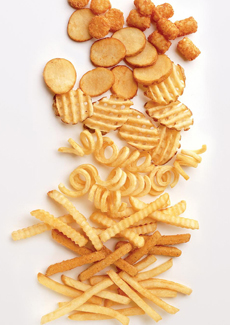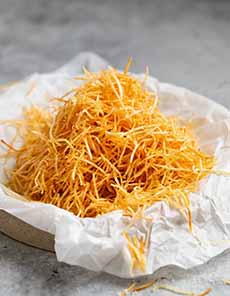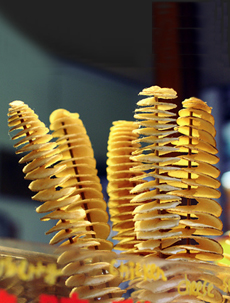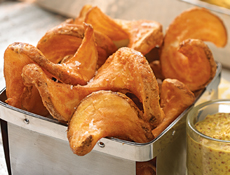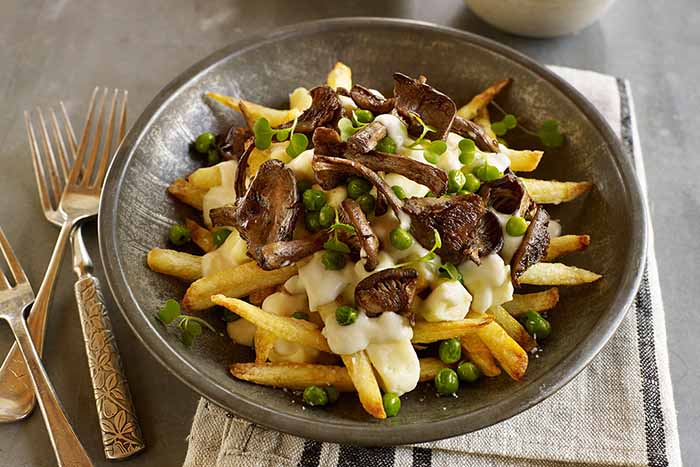The Different Types Of French Fries: A Glossary
|
Today, August 12th, is National Julienne Fries Day. We’re here to talk French fries, julienned, and beyond. First, what are julienne fries? How do they fit in with all the other types of fries? Julienne is a French cutting technique, typically for vegetables, in which the food item is cut into long thin strips, similar to matchsticks. Another word for the same cut is allumette. In the glossary below there are 30+ different types of fries for you to try! National French Fry Day is the second Friday in July (it was formerly July 13th). The glossary follows, but first: > The history of French fries is below. > The different types of potatoes: a photo glossary. > The year’s 30 potato Holidays. > Make your own signature French fries recipe. |
[2] The thinnest fries possible are pommes paille, translated literally as straw potatoes. Here’s a recipe (photo © Recipe Tin Eats). |
|
|
|
||
|
|
|
|
 [7] Poutine is often served in an untidy presentation like this (photo © V. W. Campin-CC-BY-NC-SA-2.0-License).
Potatoes originated in Peru and spread to other parts of Latin America. Fried potatoes—cooking potatoes in fat over a fire—is a practice thousands of years old. Potatoes were “discovered” and brought back to Europe by the Spanish conquistadors in the 16th century—where they were used as hog feed! The French were convinced that potatoes caused leprosy, and the French Parliament banned the cultivation of potatoes in 1748. Modern french fries date to the late-1600s. In the winter, when the rivers iced over and fishing was difficult, fried potatoes were substituted for fish at meals in some regions. During World War I the fried potatoes were nicknamed “French fries” by the Americans because the official language of the Belgian Army was French. They carried the name back to America. While the French had nothing to do with naming French fries (the term in French is pommes frites, fried potatoes), they did finally start eating potatoes in the 18th century. A French army medical officer named Antoine-Augustine Parmentier was forced to eat potatoes as a P.O.W. and discovered their culinary potential. Through his efforts, in 1772, the Paris Faculty of Medicine finally proclaimed that potatoes were edible for humans—though it took a famine in 1785 for the French to start eating them in earnest. In 1802, Thomas Jefferson’s White House chef, Honoré Julien, a Frenchman, served “potatoes served in the French manner” at a state dinner. The potatoes were “deep-fried while raw, in small cuttings.” French fries had arrived in the U.S., if not in name, then in form. The French didn’t call them French fries, but frites, the word for fried potatoes. So how did they get called “French” fries? One prevailing theory is that “French” came from American soldiers who arrived in Belgium during World War I. They came across frites. Since the dominant language of southern Belgium is French, they dubbed the tasty potatoes “French” fries and brought the term (and the demand) back home. Shortly afterward, in the early 20th century, the term “French fried,” meaning “deep-fried,” was being used for other foods as well (onion rings and zucchini sticks, anyone?) UNESCO has declared the Belgian French Fry “a cultural treasure,” giving it Heritage Status. Belgian fries are served in a paper cone with mayonnaise and eaten with a small fork. July 13th is National French Fry Day. CHECK OUT WHAT’S HAPPENING ON OUR HOME PAGE, THENIBBLE.COM.
|
||
